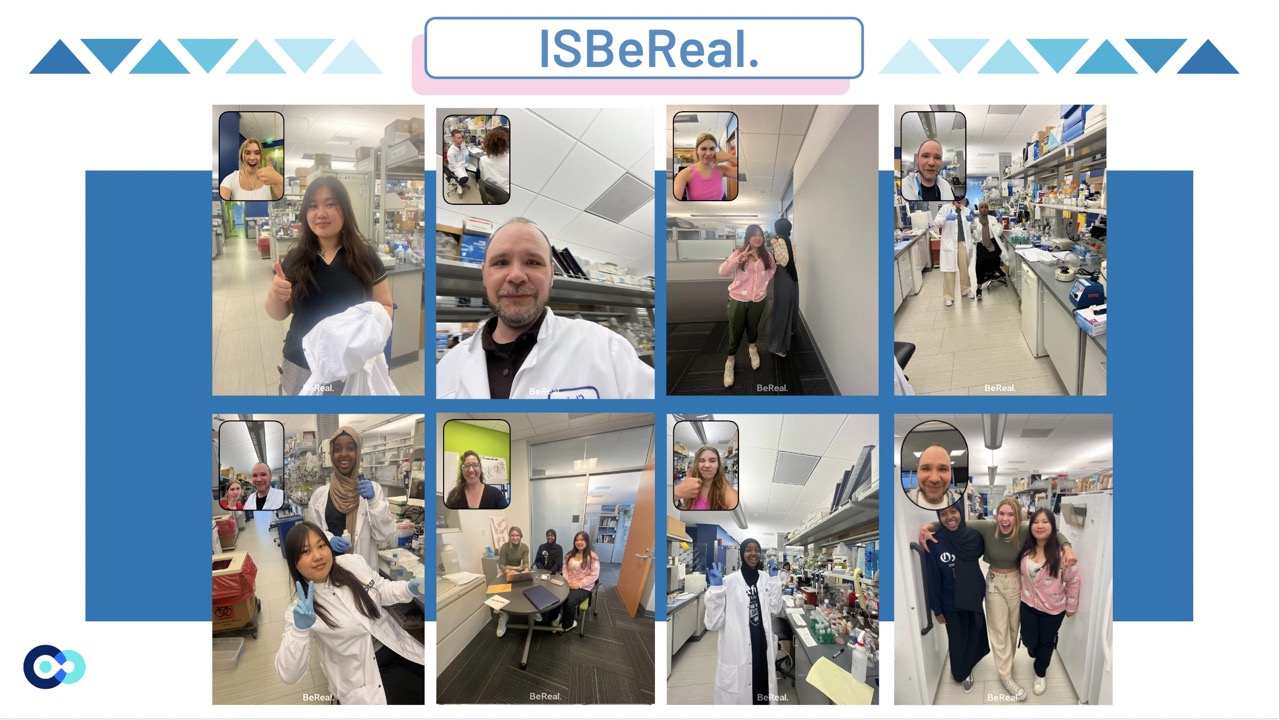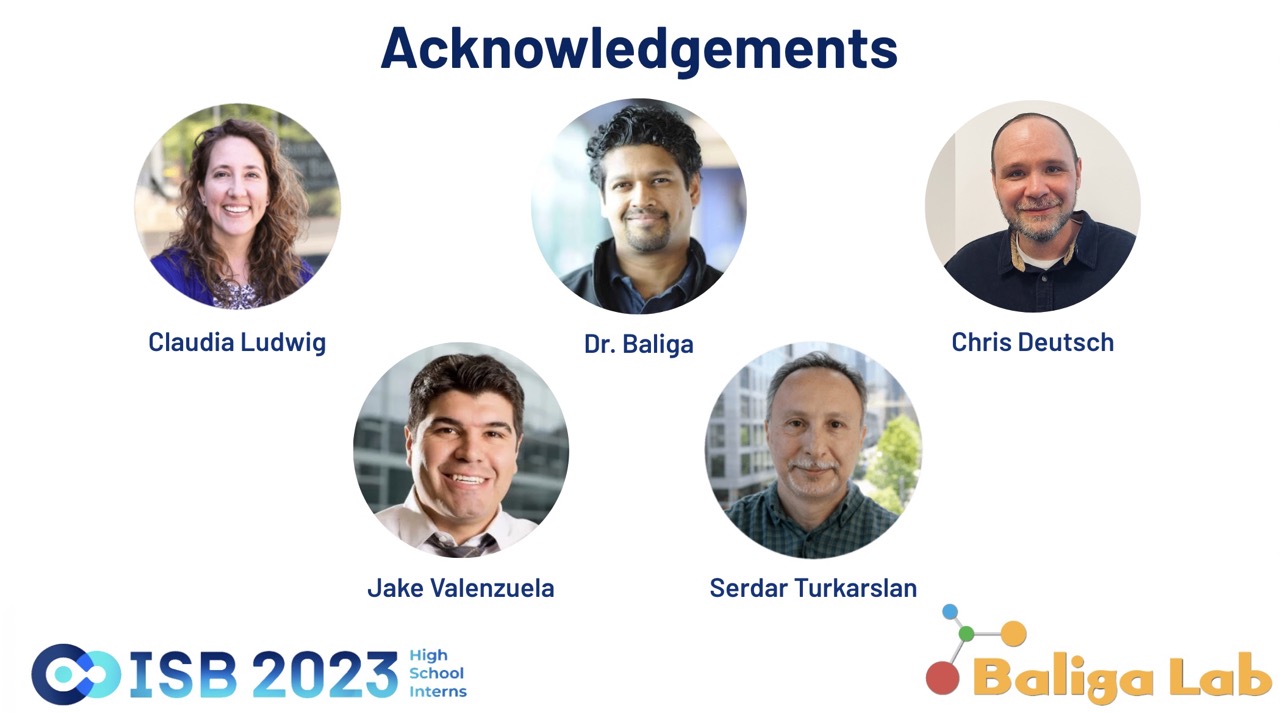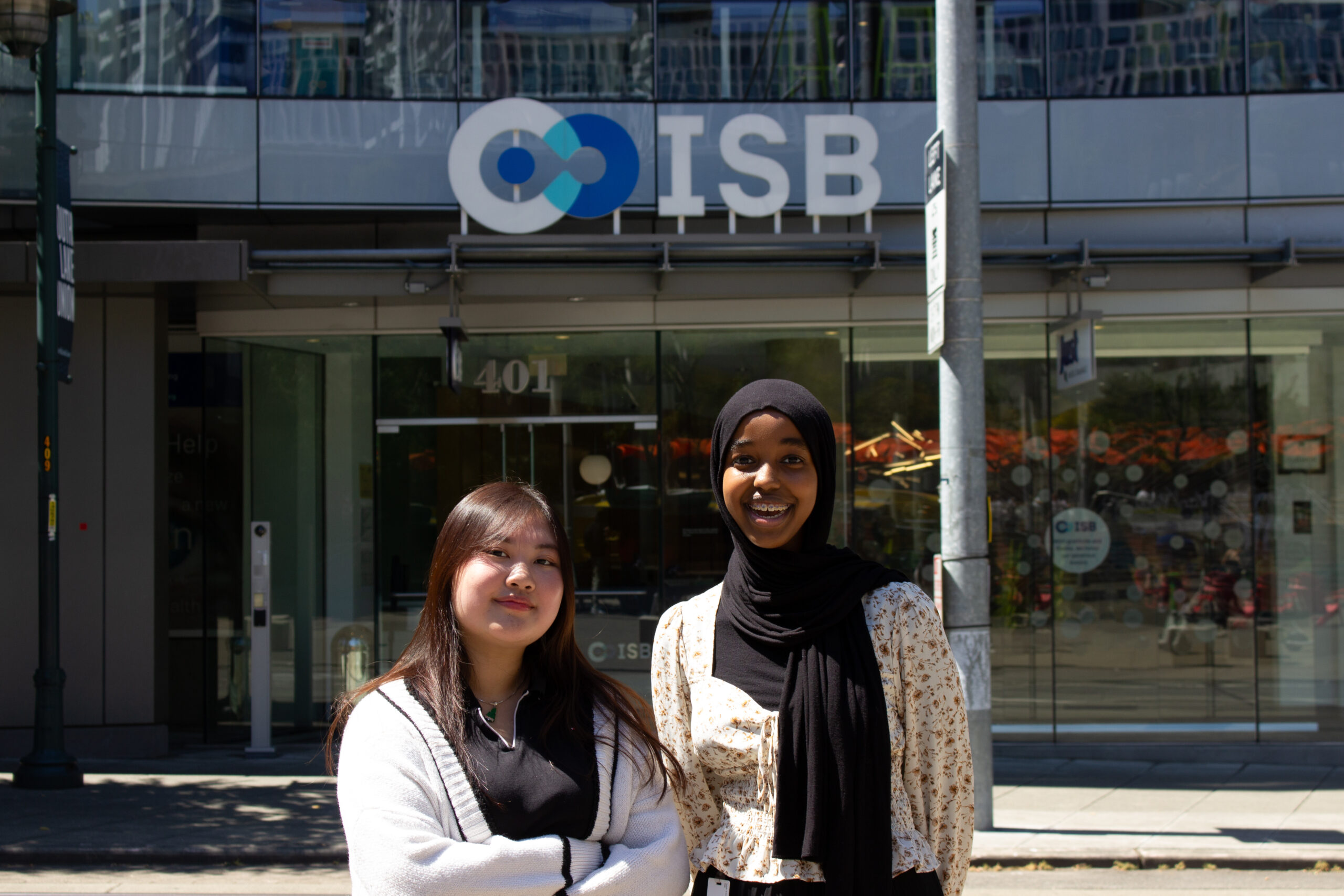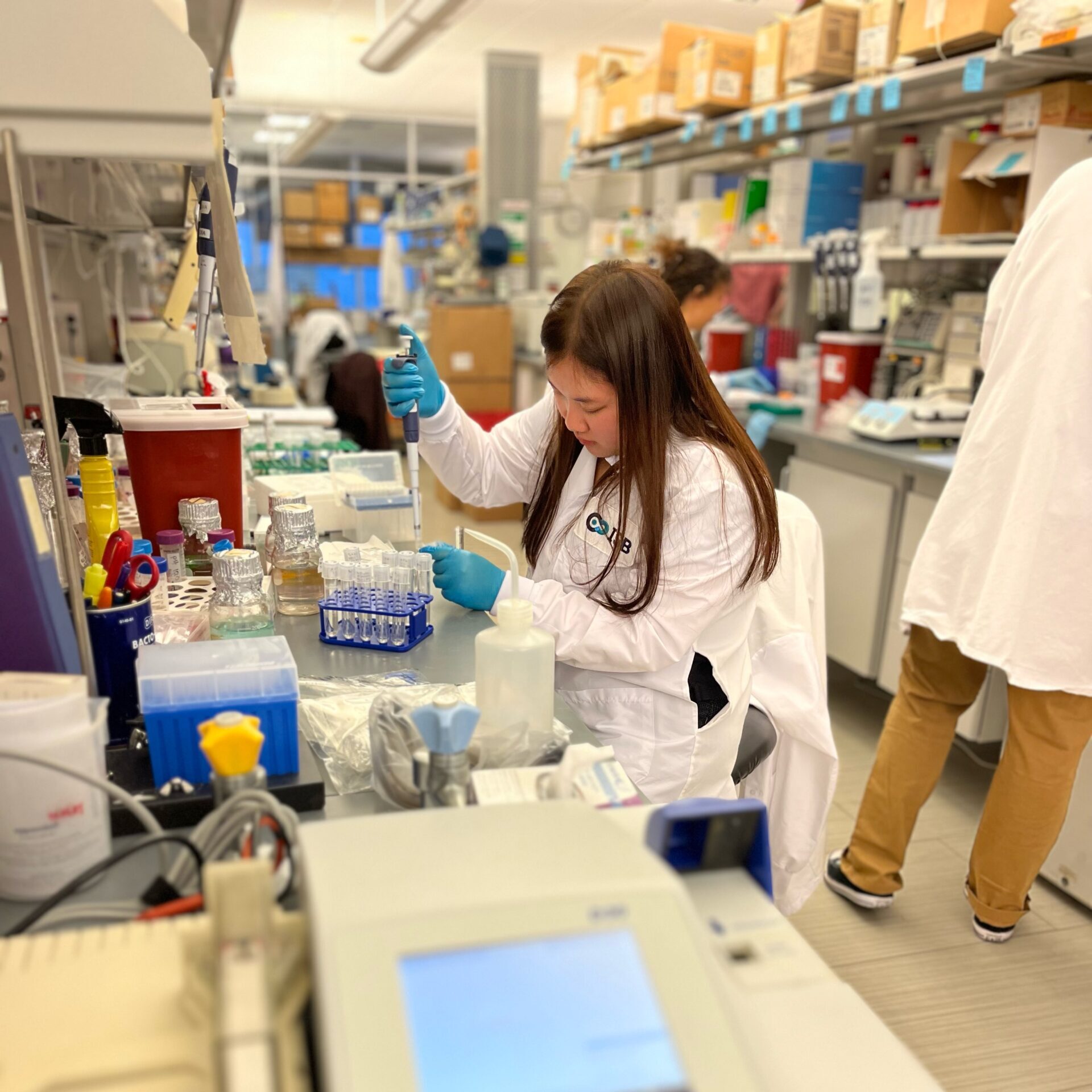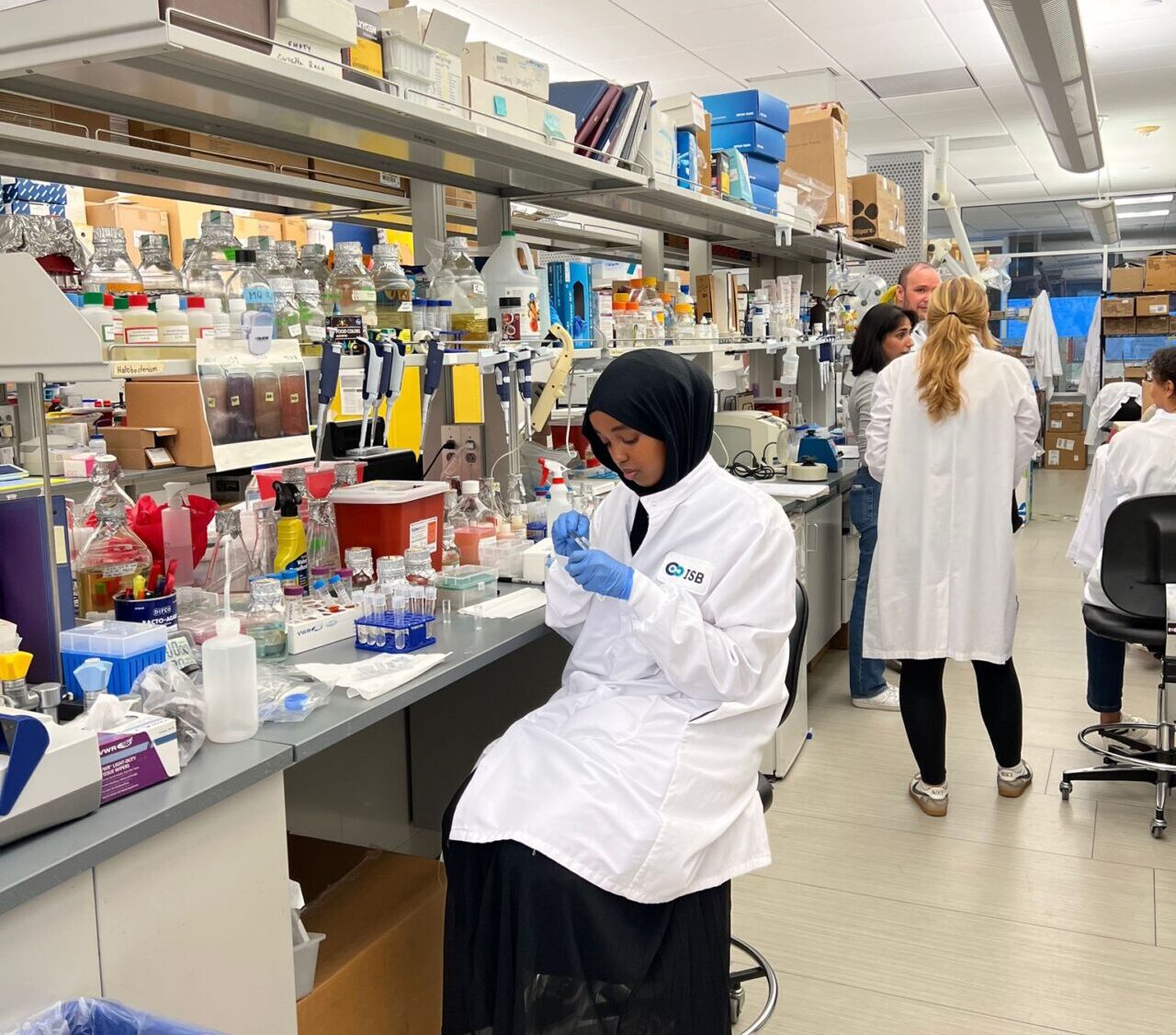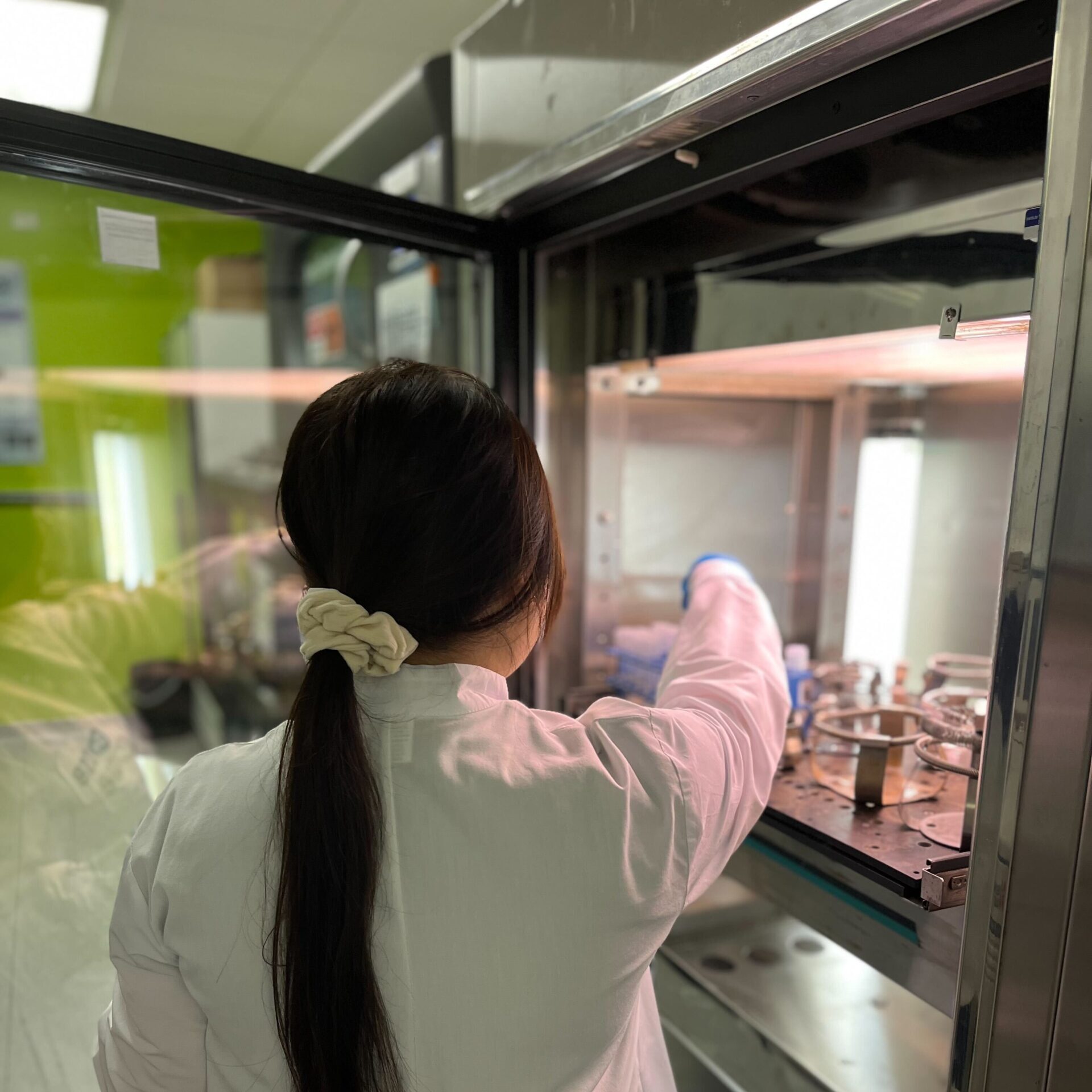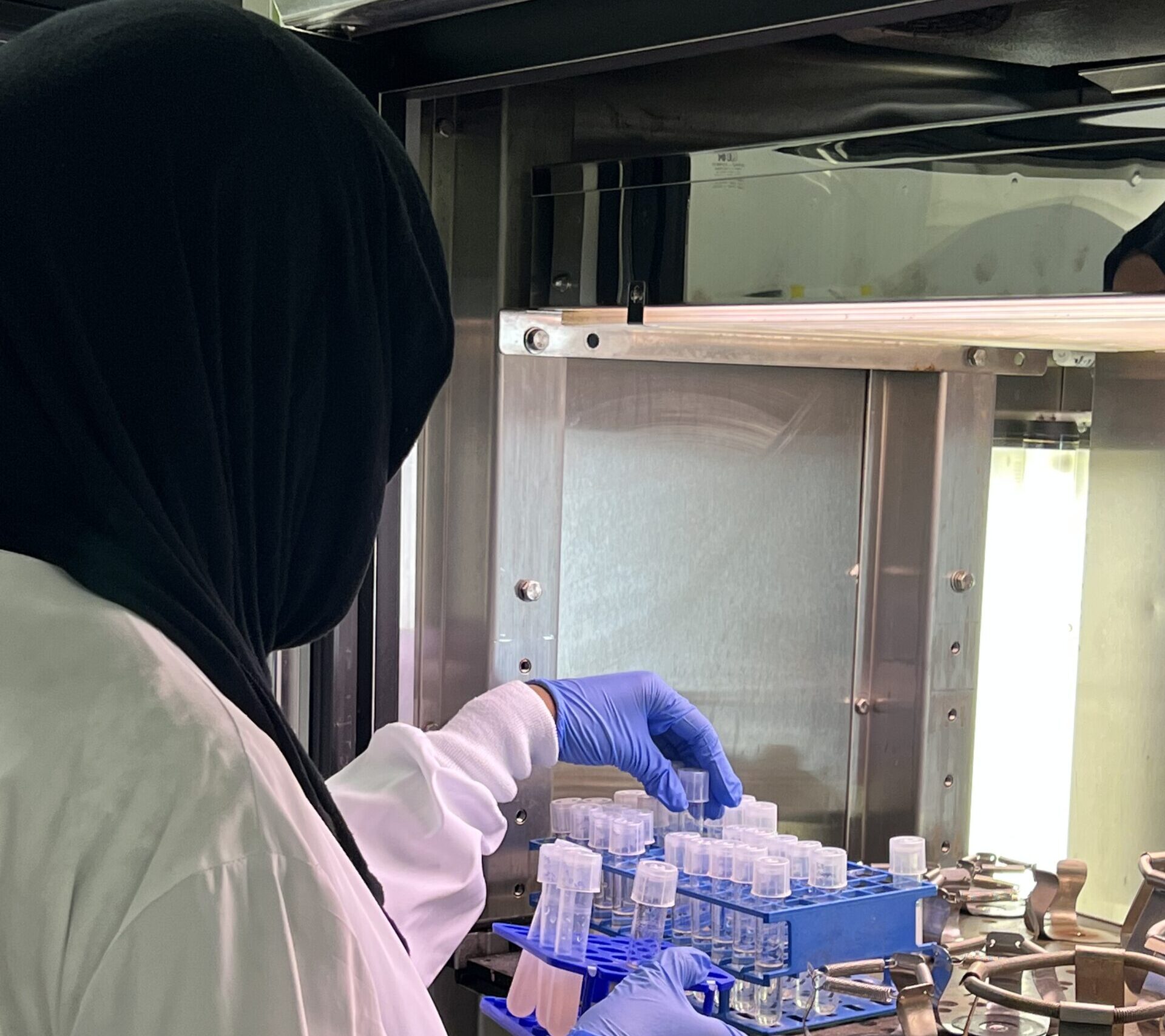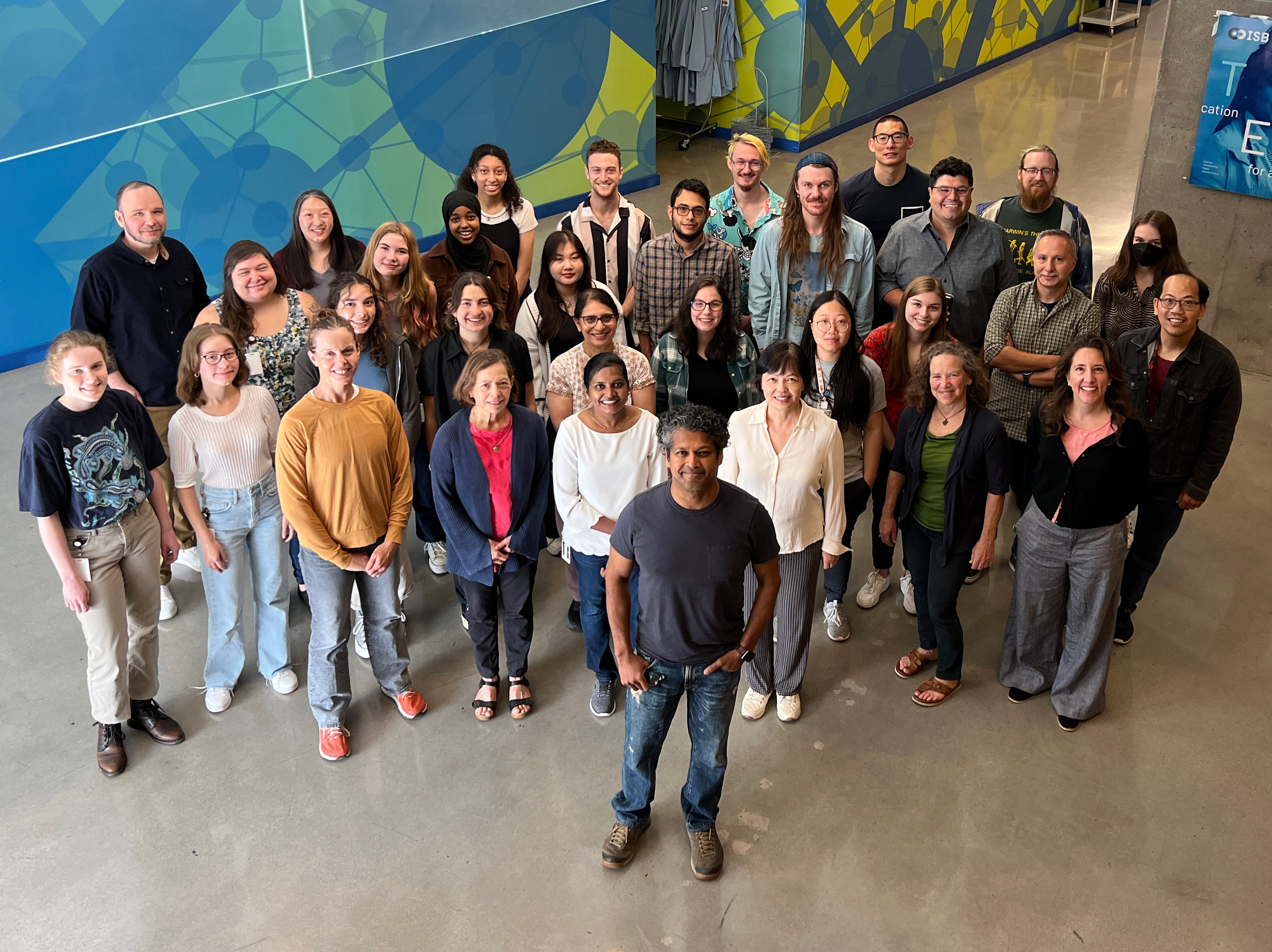A Note From the Interns
We'd like to thank our mentor Claudia Ludwig for the immense support she has provided us throughout this internship. We'd also like to thank Chris Deutsch for always being willing to help (and entertain) us in lab.
Our advice to future interns is to not be afraid to mess up in the lab. Trial and error is the best method of learning! We'd also like to remind you guys to have fun, because the experience is just as important as the science!
-Phuong & Nastexo
Interns Nastexo Nur and Phuong Tran, alongside undergraduate intern Kally Chamberlain, worked on creating a lab-based curriculum to describe evolution, adaptation, and resiliency to high school students. They were especially interested in systems' collapse and recovery dynamics when exposed to multiple stressors. They used the model organism Halobacterium salinarum NRC-1 to create a hands-on experiment for students to try out in the classroom as a part of ISB's System Education Experiences (SEE) curriculum. Before the experiment could be introduced to classrooms, they had to design and test it multiple times. Below is a summary of their work so far. It is still a work in progress, but we hope it will soon be ready to be integrated into the SEE curriculum.
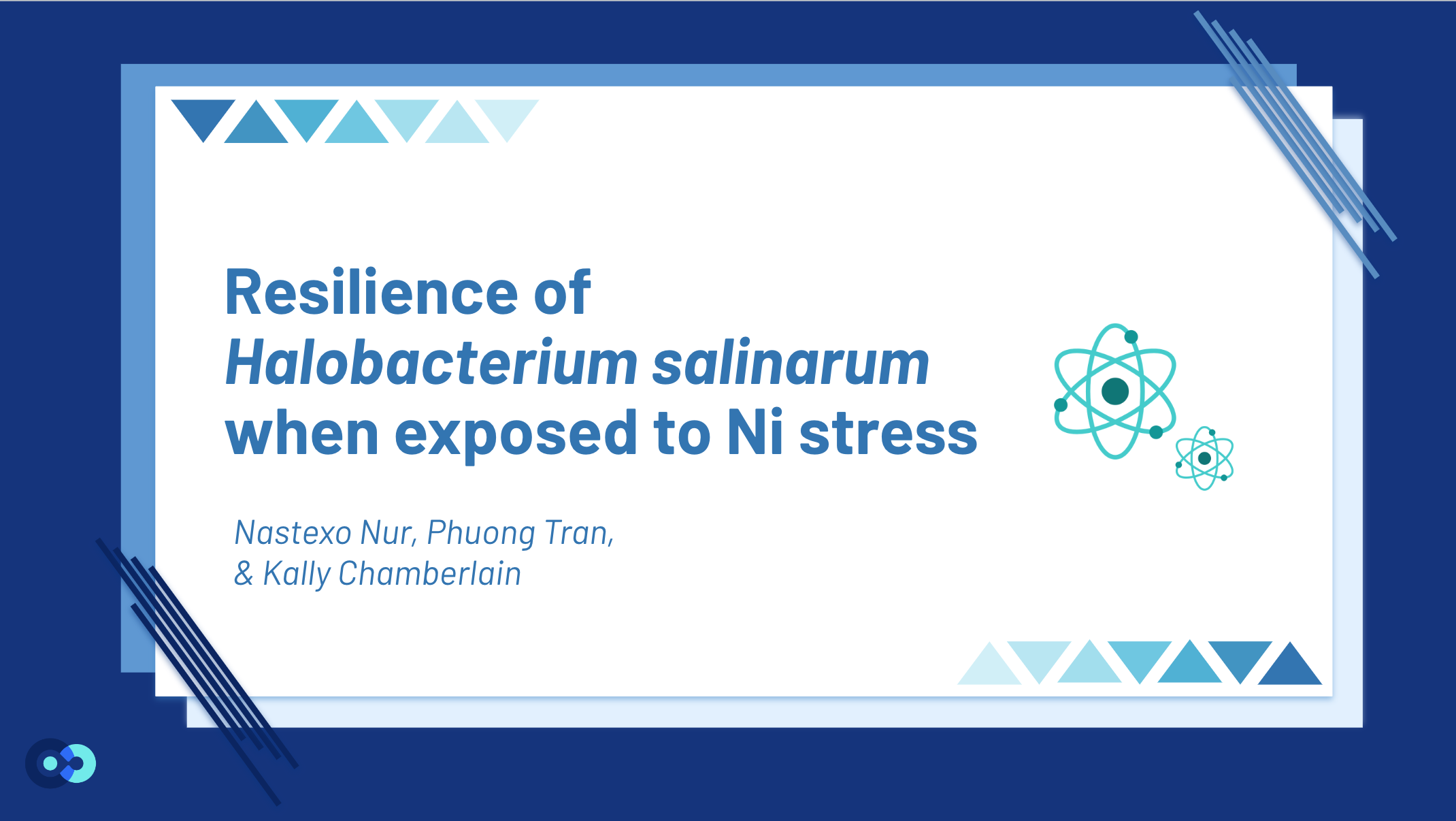
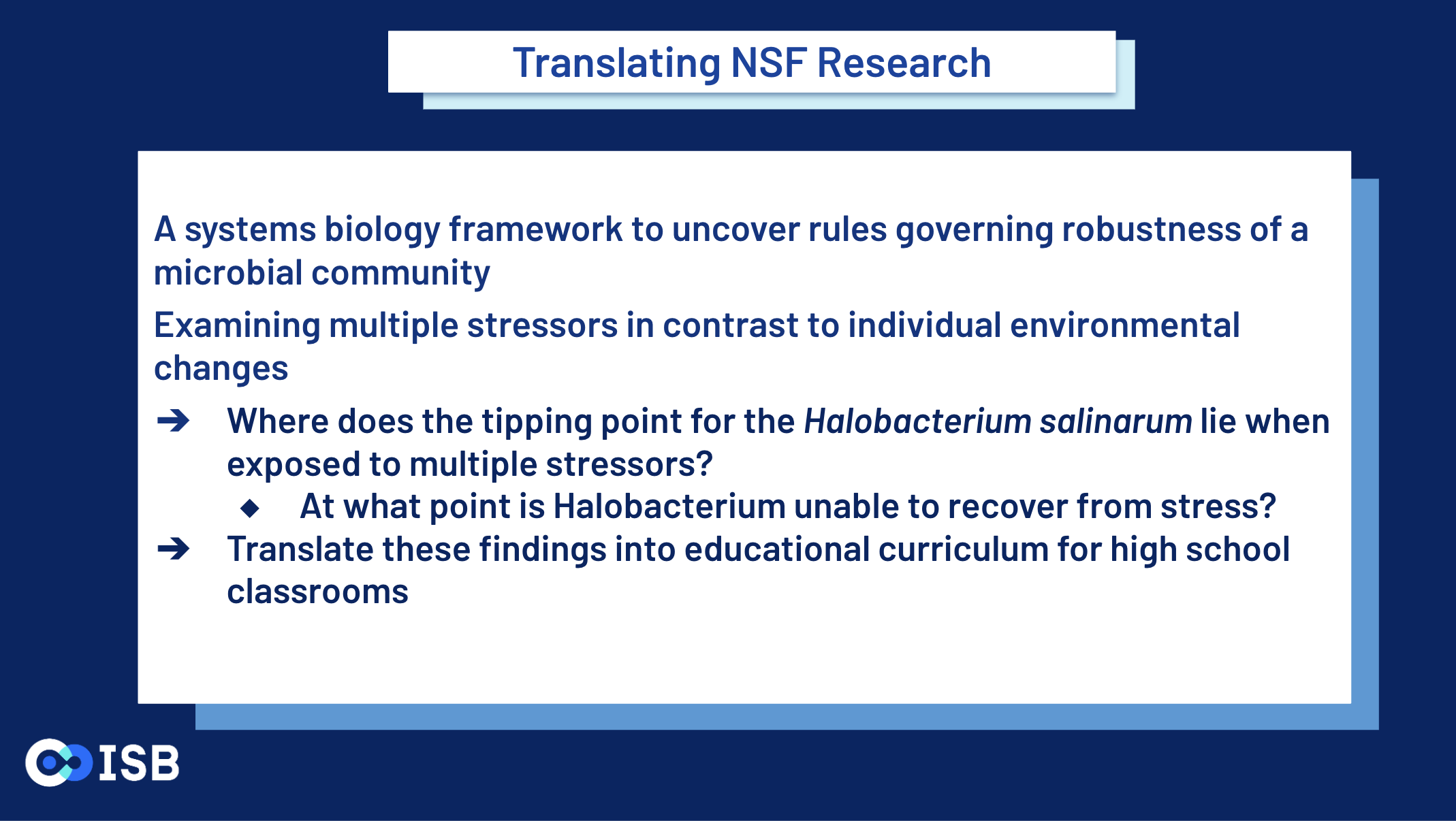
This summer, our work focused on creating a lab-based curriculum describing the overarching rules governing natural systems. As a subset of these efforts, our project aimed to demonstrate the concepts of resilience and collapse through a hands-on experiment with the model organism Halobacterium salinarum. We designed a stress test where Halo was grown in the presence of two different stressors to the point of population collapse and then observed its recovery dynamics. We plan to refine this experiment to be replicated in high school classrooms.
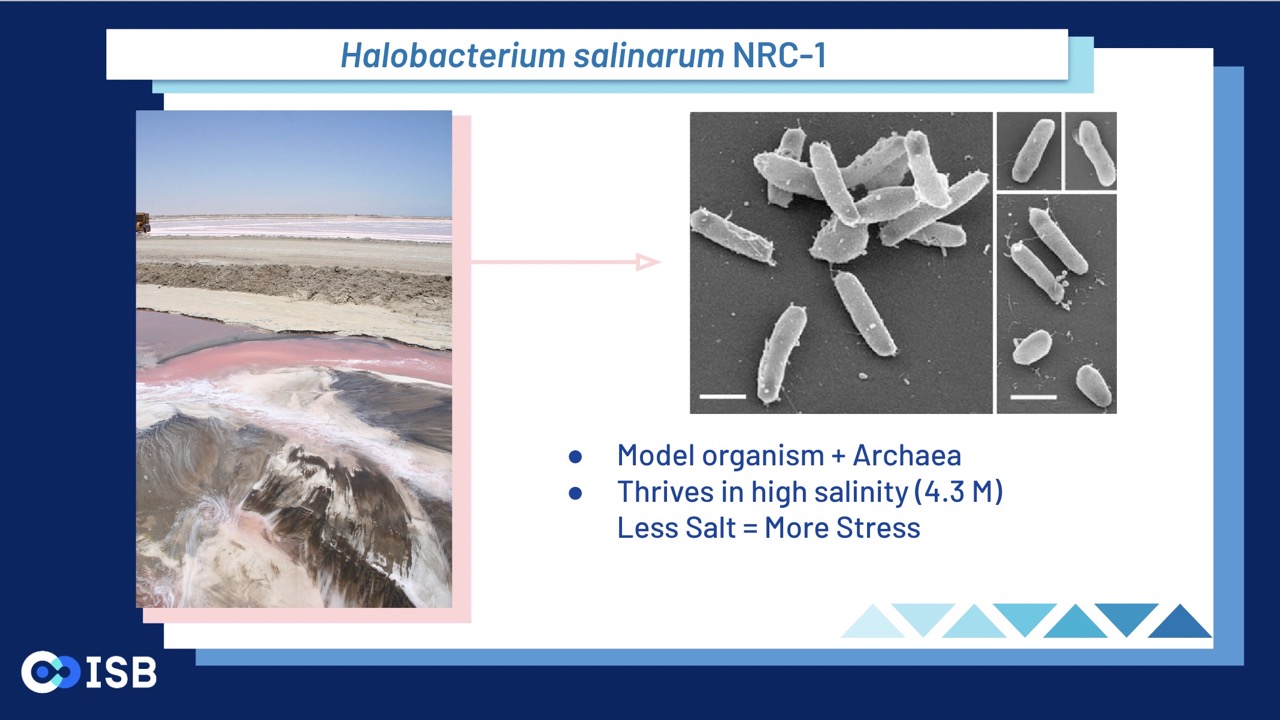
We became familiar with Halobacterium salinarum, or Halo, an archaea famous for surviving in high-salinity environments like the Great Salt Lake. Archaea can be seen as a bridge between Eukaryotes and Bacteria. They play an immense role in genetic and biological research. Halo is unique in that not only can it grow in high salt concentrations, it thrives in highly salty environments.
The baseline stressors our cultures were exposed to were salinities lower than 4.3 M (their preferred salt concentration), such as 3.3 M. ISB is already familiar with the effects of varying salinity on Halo's Growth, like how it takes longer to grow or does not grow at all in low salt concentrations, so for our experiment, we chose to focus on the combined effects of a baseline salinity stressor and an additional stressor the culture was repeatedly exposed to.
The main tool we utilized in our experiments was a spectrophotometer. We used it to measure our samples' Optical Density (OD). A beam of light was shot through about 1 mL of our sample, and the instrument gave us a reading telling us how dense our culture was. This indicated how many cells were in our samples. An OD of ~0.80-1.0 is considered full growth.
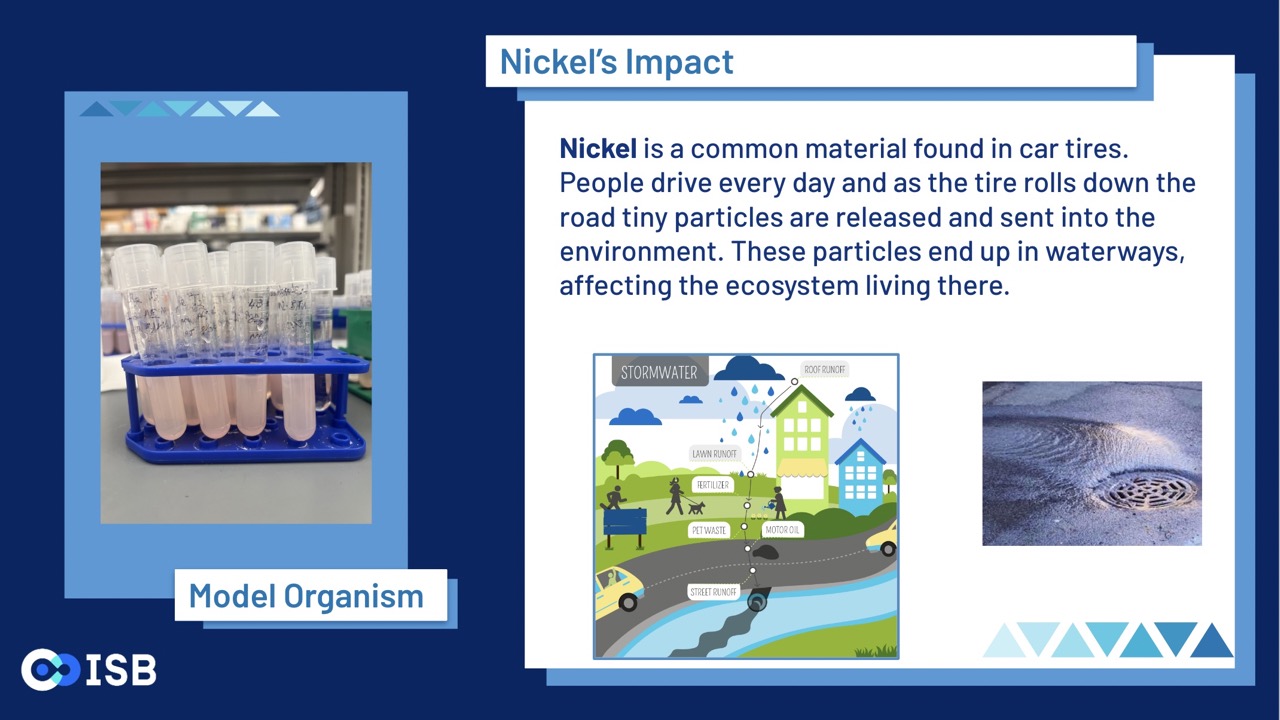
At the start of the summer, we conducted experiments testing the effect of various metals on Halo’s growth. We found the impact of nickel to be the most reliable and relatively safe for classroom use.
When picking our additional stressor, we considered some broader ecological impacts students might be interested in. For example, nickel is a common material found in car tires, which can lead to nickel ending up in our waterways. Multiple other factors can also contribute to nickel coming into the water. For example, nickel and other harmful metals can collect and enter our channels during rainfall.
An example of a question that students can investigate using our curriculum is “What effect would nickel from car tire runoff have on our marine ecosystems?” Halo would be used as a model organism to study these effects. Halo is a safe organism to grow in classrooms, and we can easily quantify its growth so it’s a great model organism for students to study the robustness and resilience of systems.
Our baseline stressor of low salinity allows us to see whether Halo has recovery mechanisms robust enough to respond to multiple stressors at once or if the population would inevitably collapse from the various stressors.
We are also in the midst of applying our stress test protocol to stressors other than nickel, such as hydrogen peroxide and other metals, to teach students other scientific concepts, such as oxidative stress response in organisms. We aim to create an array of experiments for students to attempt in the classroom to move our education system towards a more project-based learning format.
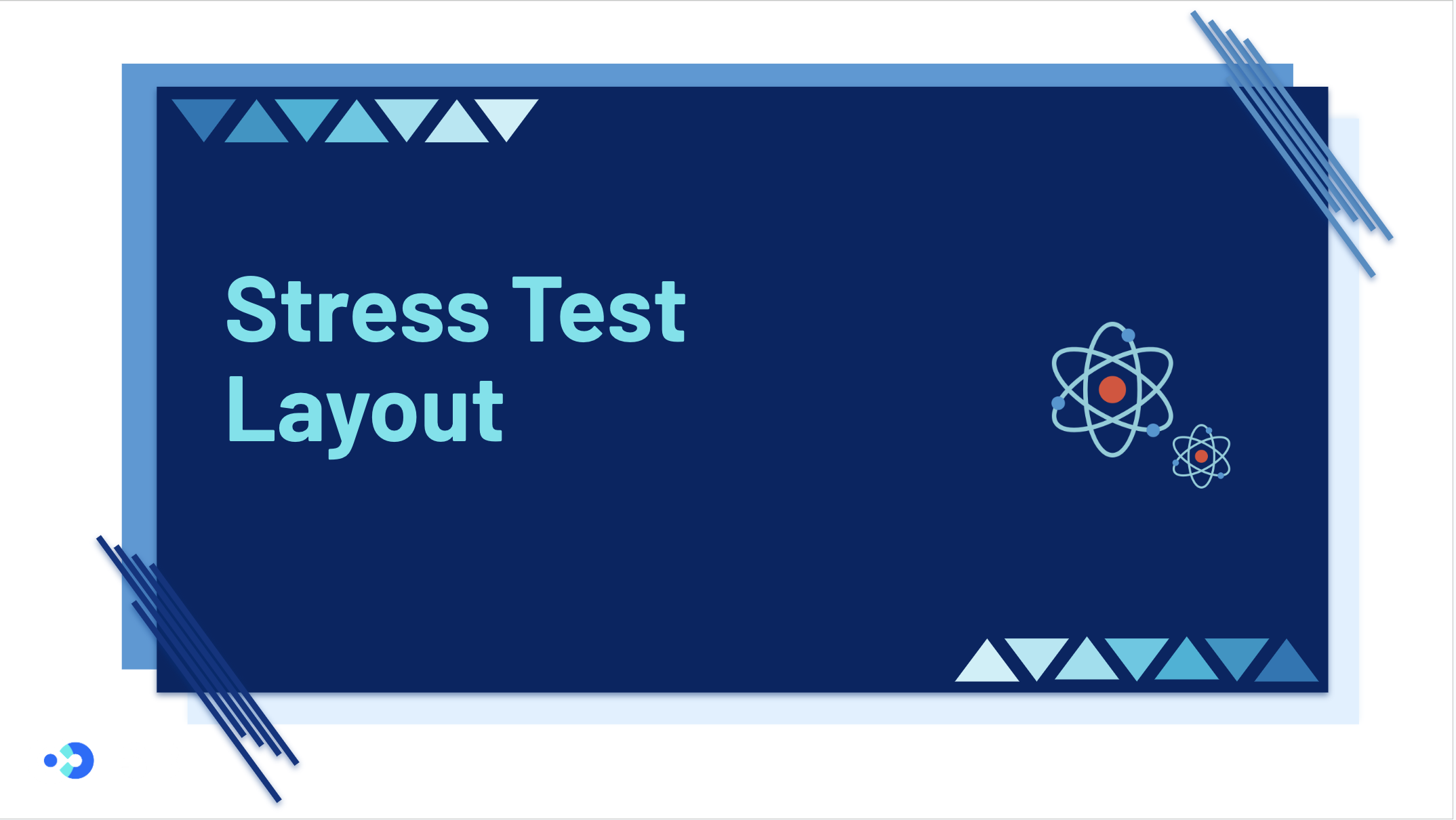
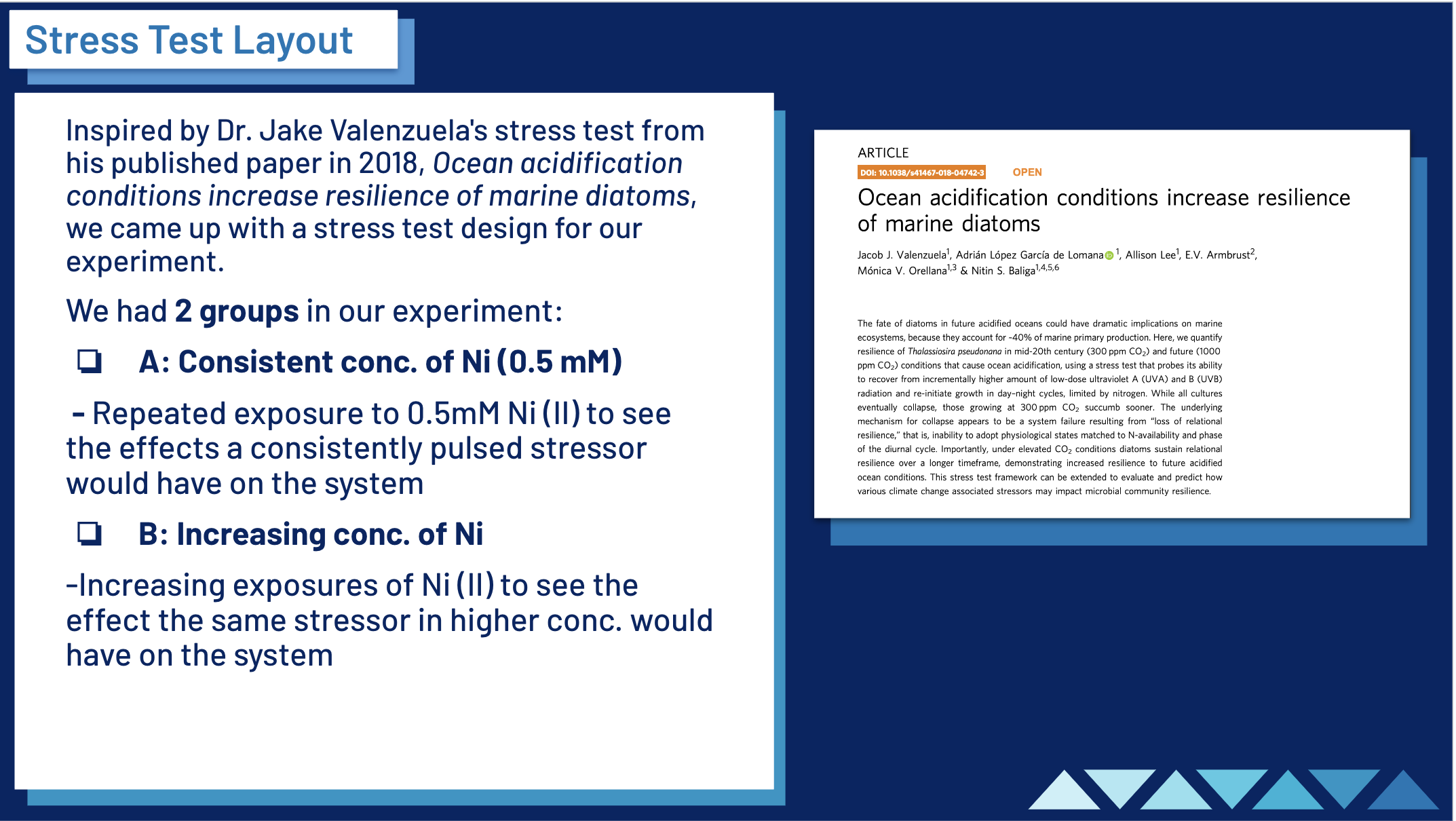
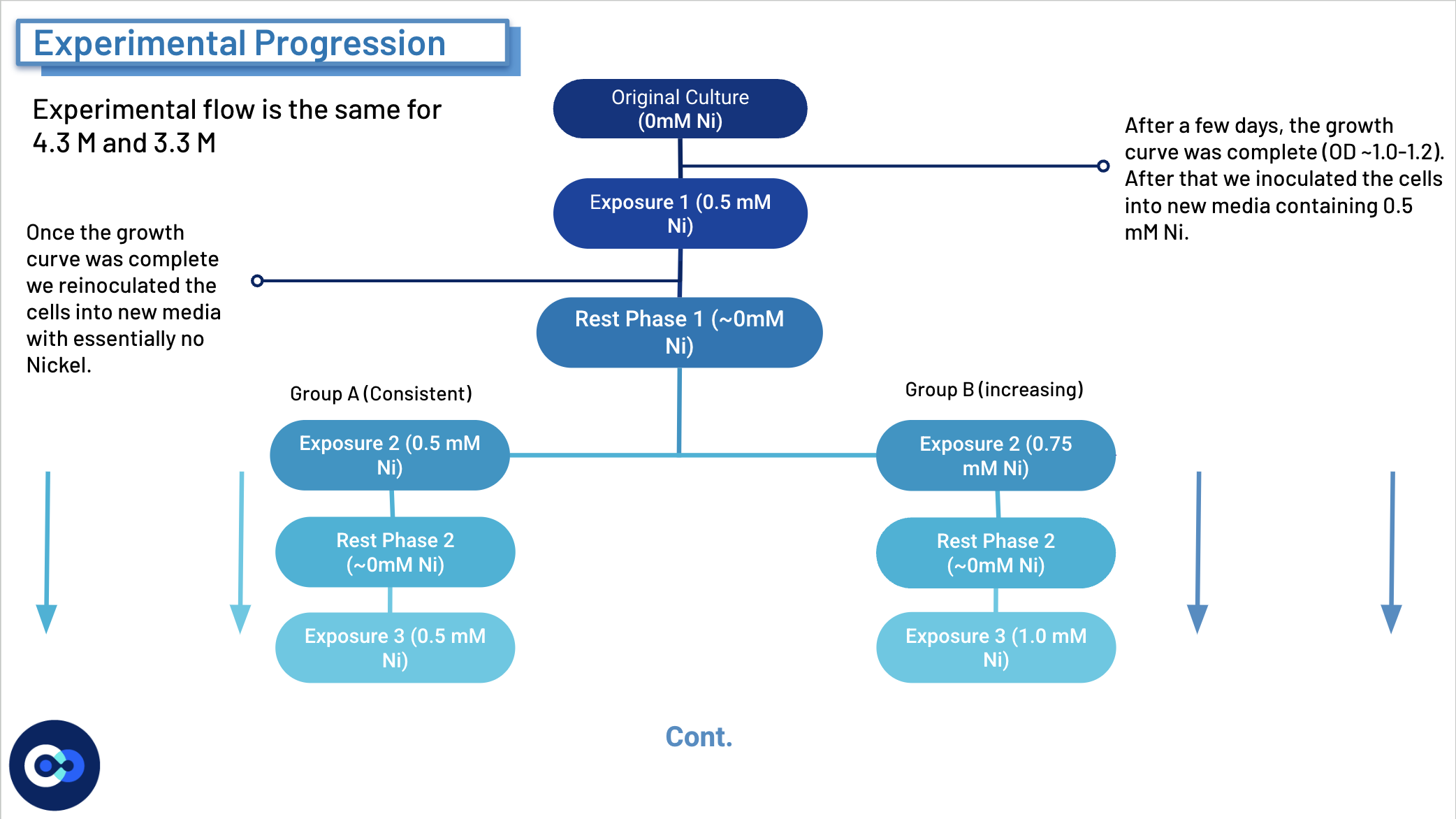

All cultures began at an OD of 0.01. We couldn’t have uniform time points across experiments when taking data due to time constraints and group intern activities.
4.3 M (Ideal environment):
When in 4.3 M media, Halo usually reaches a full growth curve in ~ 48 hours. As you can see in the 4.3 M graph, it took about 5 days for the Halo to reach a full growth curve, indicating that even a small amount of nickel, such as 0.5 mM, is enough to seriously disrupt Halo’s growth patterns.
3.3 M (Stressed environment):
It took about 6 days for the Halo to reach a full growth curve, which is much longer than normal, indicating growth inhibition.
Overall, we see that adding an additional stressor of nickel causes Halo to grow slower than expected, and growth is slower when you have multiple stressors.
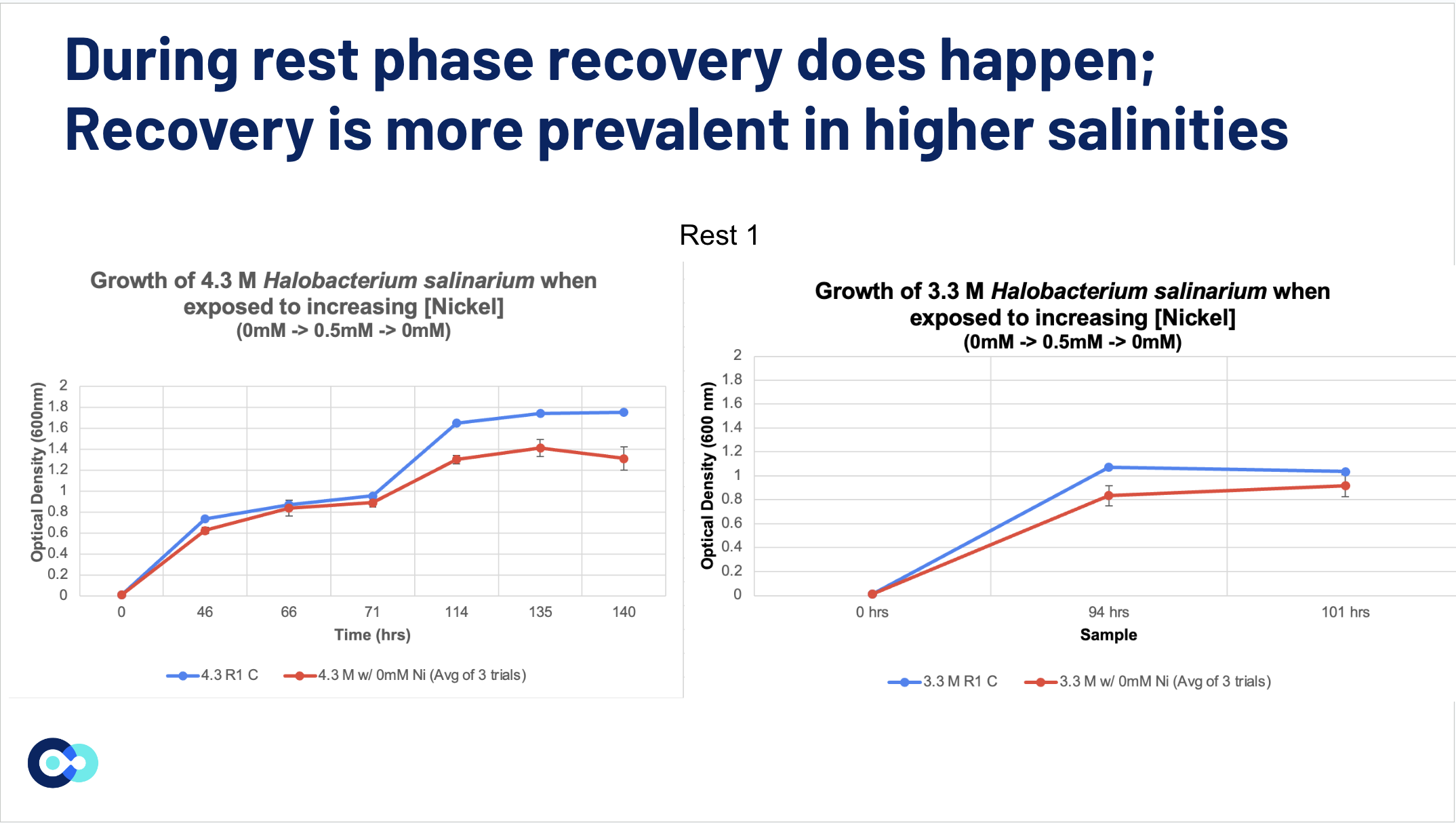
We also wanted to see the recovery aspect of Halo’s stress response. In the Rest 1 phase, our Halo was put into new media without nickel.
We can see again that the Halo in 4.3 M media grows quicker than in 3.3 M media.
We also see that the final OD is lower in our 3.3 M media than our 4.3 M media. This tells us that the constant stress of low salinity is reducing Halo’s recovery ability.

This graph summarizes our 0.5 mM data onto one plane for our 4.3 M and 3.3 M experiments.
3.3 M: With added salinity stress, we can see that the cells are unhealthy, and they begin struggling much quicker. Recovery is seen but not as much as in our 4.3 M cells. In the E2 population, collapse is much quicker than in our 4.3 M population.
Both graphs show that repeated 0.5mM nickel stress inhibits Halo’s growth.
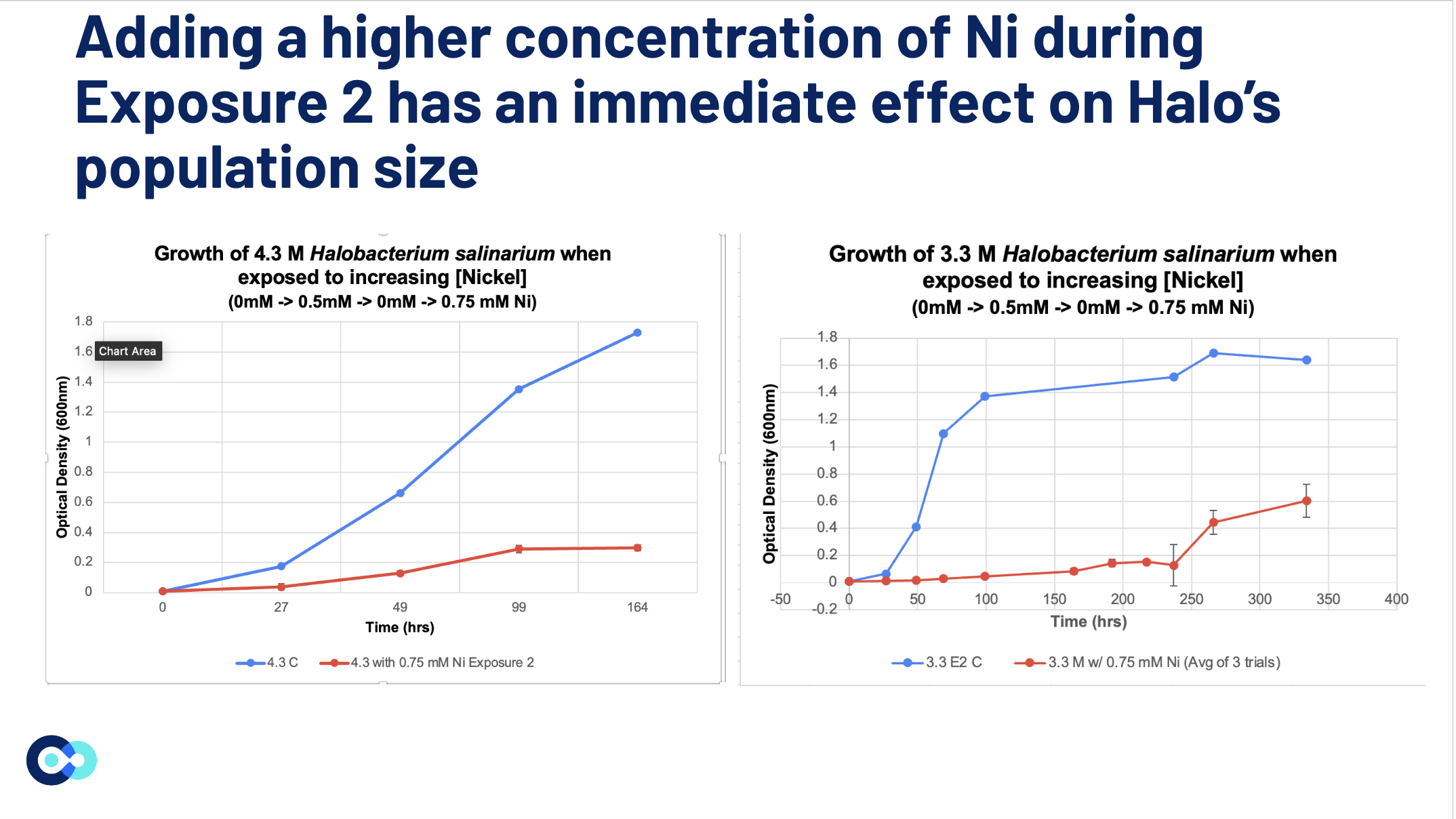
We are still taking data points to better understand what is happening when Halo is exposed to 0.75 mM of nickel. So far, we have seen that there is an immediate inhibition of growth in both molarities.



We had an amazing time at ISB! We learned so many new skills and gained many invaluable friendships this summer. We can't wait to continue our work at ISB in the school year!
